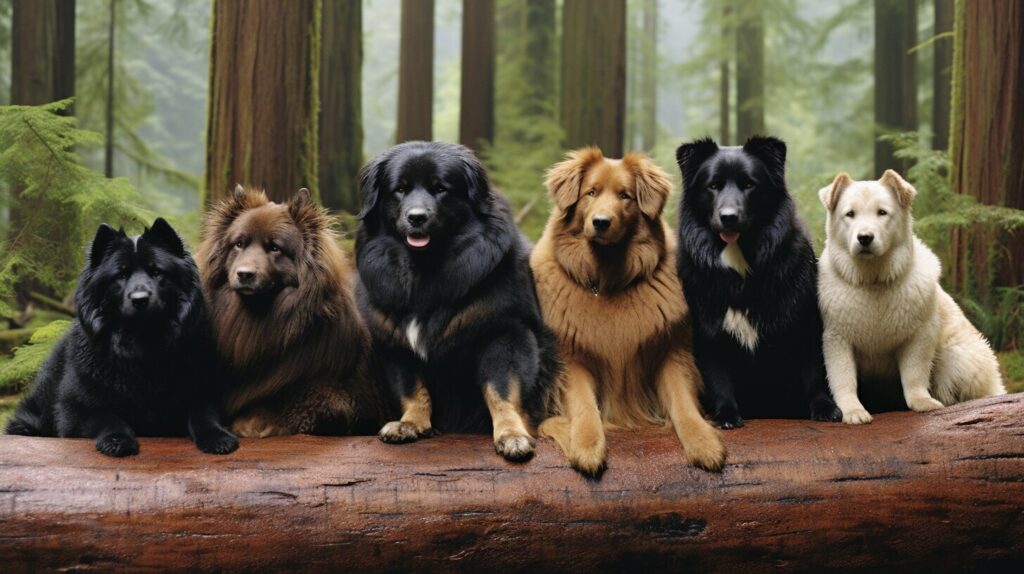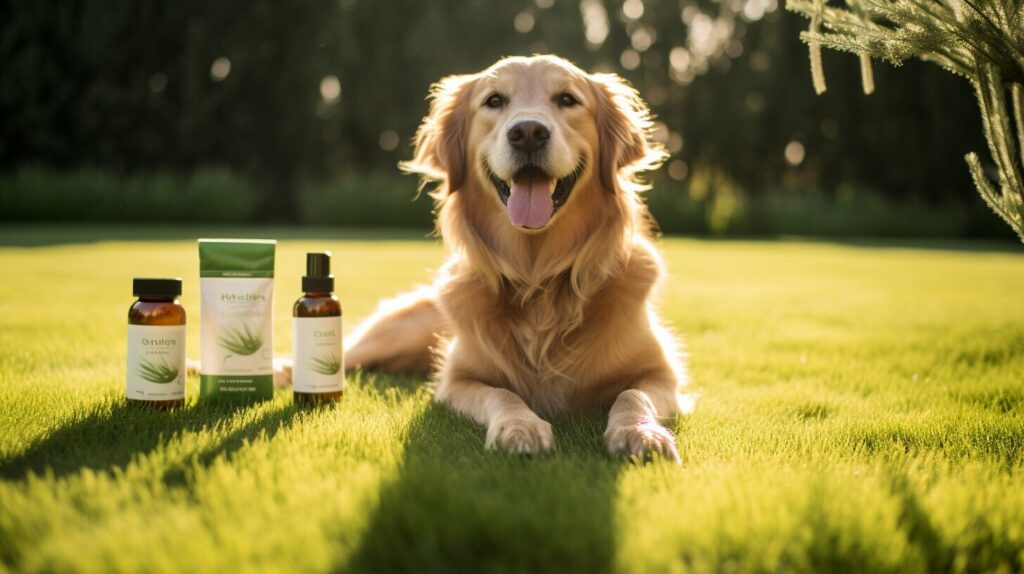Dogs and bears are two of the most fascinating and beloved animals in the natural world. Whether as pets or in the wild, they capture our hearts and imaginations with their unique characteristics and behaviors. But as much as we admire them, we must remember that they are two very different species, each with its own set of attributes and habits.
Understanding the relationship between dogs and bears is crucial for those living in regions where both species coexist, as well as for those who love to hike or camp in bear country. Knowing the basics of canine and ursine behavior can help you stay safe and avoid potentially dangerous encounters.
In this article, we will explore the relationship between dogs and bears, their similarities and differences, and what you can do to ensure their safe coexistence. We will also provide tips for dog owners to keep their pets safe in bear country and strategies for training dogs to behave appropriately in the presence of bears.
Key Takeaways:
- Dogs and bears are two distinct species with different physical characteristics, behavior, and habitats
- Potential interactions between dogs and bears can range from neutral to aggressive
- Understanding both individual dog and bear behavior is important for safe coexistence
- Safety precautions such as keeping dogs on a leash and securing trash cans can minimize encounters and conflicts
- Training dogs to behave appropriately around bears is essential for their safety
- Successful coexistence between dogs and bears requires responsible pet ownership and community efforts
Dogs and Bears: Similarities and Differences
As canids and ursines, dogs and bears share a common lineage that diverged over millions of years of evolution. Despite their differences in size and shape, they display similar anatomical features such as sharp claws, keen senses of smell and hearing, and powerful jaws. Both species also exhibit social behavior, although the composition and structure of their groups differ significantly.
One of the most significant differences between dogs and bears is their habitat. While dogs are domesticated and primarily live with humans in urban or suburban areas, bears predominantly inhabit wild and rural habitats such as forests, mountains, and grasslands. Due to the increasing encroachment of human populations in natural habitats, bears are now more frequently found in close proximity to residential areas, increasing the chances of potential interactions with dogs.
Another notable difference is their diet. Dogs are omnivores and have been domesticated to eat a diet of processed food and table scraps, whereas bears are primarily omnivorous and feed on a combination of plant and animal matter. Bears also undergo hibernation during the colder months, reducing their activity levels and caloric needs.
Similarities between Dogs and Bears
Despite their differences, dogs and bears share several similarities. Both species have acute senses of smell, with dogs having an olfactory system that is thousands of times more powerful than humans. Similarly, bears have an exceptional sense of smell that allows them to locate food from a distance, an adaptation that has helped them survive in the wild.
Both dogs and bears also exhibit behavioral plasticity, meaning they are capable of adapting their behavior to changing environments and situations. Canines have been selectively bred for thousands of years for specific purposes, such as hunting, herding, and guarding. Similarly, bears have evolved a range of adaptations to meet the challenges of their environment, such as foraging for food and defending their territory.
Finally, both dogs and bears have the potential to interact with humans, although these interactions can range from neutral to aggressive. Understanding the similarities and differences between dogs and bears can help promote safe and harmonious coexistence between the two species, especially in areas where their habitats overlap.
The Dog-Bear Relationship: How They Interact
The potential relationship between dogs and bears can vary depending on numerous factors such as territory, food availability, and individual behavior. It is important to understand the different types of interactions they may have in order to ensure safety for both species.
In the wild, encounters between dogs and bears may occur when dogs accompany their owners during outdoor activities. In suburban areas, bears may be attracted to residential areas due to food sources such as bird feeders, unsecured garbage cans, and outdoor pet food. The presence of humans and their domestic pets in these areas may alarm or provoke bears, leading to potentially dangerous situations.
The interaction between dogs and bears can range from neutral to aggressive. In some cases, dogs and bears may simply ignore each other and go their separate ways. However, in other instances, dogs may approach or chase bears, causing the bears to perceive them as a threat. Bears have been known to react defensively towards dogs, potentially causing injury or even death to the dog.
Factors such as the size and behavior of the dog, the age and sex of the bear, and the availability of food can all impact the interaction between the two species. For example, a small dog may be viewed as prey to a hungry bear, while a large, aggressive dog may be seen as a threat.
It is important to take precautions to prevent negative interactions between dogs and bears. Keeping dogs leashed while outdoors, securing trash cans, and properly storing food can all minimize the chances of an encounter. Additionally, if a dog and bear do encounter each other, it is important for the dog owner to remain calm and avoid approaching the bear. Attempting to intervene can escalate the situation and potentially put both the dog and owner in danger.
By understanding the potential interactions between dogs and bears and taking appropriate safety measures, it is possible for both species to coexist in shared habitats.
Behavior of Dogs and Bears
Understanding the behavior of both dogs and bears is crucial for ensuring their safe coexistence. Dogs are highly social animals, with a strong pack mentality and the ability to communicate through body language and vocalizations. They have been domesticated for thousands of years and have evolved to hunt in cooperation with humans.
Bears, on the other hand, are solitary animals that communicate primarily through scent and body language. They are highly adaptable and can survive in a range of habitats, from forests to tundra. Bears have evolved to be efficient hunters and foragers, with specialized teeth and digestive systems that allow them to consume a wide variety of foods.
When interacting with each other, dogs and bears may display a range of behaviors depending on the situation. In some cases, they may simply ignore each other and go about their business. However, if a dog approaches a bear too closely or aggressively, the bear may become defensive and attack.
Dogs may also exhibit behaviors that can be problematic when interacting with bears. For example, they may chase or bark at bears, which can provoke an aggressive response. Additionally, dogs may be attracted to the scent of food, which can lead them into conflict with bears over resources.
Instincts and Adaptations
Both dogs and bears have evolved a range of instincts and adaptations that help them survive in their respective environments. For dogs, these include a strong sense of smell, sharp teeth, and the ability to hunt in packs. Bears, on the other hand, have a keen sense of smell, powerful jaws and claws, and the ability to hibernate during times of food scarcity.
In terms of behavior, dogs and bears also display distinct patterns. For example, dogs are known to engage in play behavior as a way of socializing and bonding with other dogs. Bears, on the other hand, are generally solitary animals and do not engage in playful behavior with other bears.
Understanding these differences in behavior and instincts is important for preventing conflicts between dogs and bears. By taking appropriate precautions and being aware of the potential risks, dog owners and hikers can help ensure a safe and peaceful coexistence with these fascinating animals.
Ensuring Dog-Bear Safety: Precautions to Take
Living in areas where bears are present can pose a risk to your dog. In order to protect your furry friend, it is important to take practical safety precautions.
Keep Your Dog on a Leash
When hiking or walking in areas where bears may be present, keep your dog on a leash and under your control at all times. This will prevent curious or reactive dogs from approaching bears, which could trigger an aggressive response from the bear.
Secure Your Food and Trash
Bears are attracted to the smell of food, so it’s important to secure your food and trash properly. Use bear-resistant containers or storage techniques to prevent bears from getting into your food. Keep trash in a secure location and only put it out on the day of garbage collection.
Stay Alert
Make noise while hiking or walking so that bears are aware of your presence. This will give them an opportunity to avoid you. Keep a lookout for signs of bear activity, like tracks or scat, and avoid areas where bears have been spotted.
Be Prepared for an Encounter
In the event that you encounter a bear, it is important to be prepared. Carry bear spray with you and know how to use it. Keep your dog close to you and avoid making sudden movements.
Do Not Approach a Bear
Under no circumstance should you approach a bear, even if it’s for a photo opportunity. This could provoke an attack. Remember that bears are wild animals and should be treated with caution and respect.
By following these safety precautions, you can help ensure the safety of both your dog and any bears you may encounter.
Training Dogs for Bear Encounters
If you live in an area where bears are present or plan to take your dog on a hike in the wilderness, it’s essential to prepare your dog to behave appropriately around bears. Training your dog is not only for their safety but also for the safety of other dogs, humans, and bears. Here are some tips for training your dog for bear encounters:
Teach Basic Commands
Teach your dog basic commands such as “leave it” and “stay” to discourage them from approaching a bear. Practice these commands regularly so your dog becomes familiar with them and responds to them quickly.
Discourage Chasing
Dogs instinctively chase animals that run away from them. To discourage your dog from chasing bears, do not let them chase other animals such as squirrels or rabbits. When you encounter a bear, immediately leash your dog and keep them by your side.
Positive Reinforcement
Positive reinforcement is an effective training technique that involves rewarding good behavior and ignoring undesirable behavior. When your dog exhibits good behavior around bears, reward them with treats, praise, or playtime. Do not punish your dog for bad behavior as this can create fear and anxiety.
Consistency
Consistency is crucial when training your dog. Ensure that everyone in your household uses the same commands and techniques to train your dog. Practice regularly, and reinforce good behavior regularly.
Remember, training your dog is an ongoing process, and you should continue to reinforce good behavior. With proper training, your dog can coexist safely with bears and other animals in their habitat.
Coexistence: Living with Dogs and Bears
Living in areas where both dogs and bears are present can be challenging. However, with proper precautions and responsible pet ownership, it’s possible for both species to coexist peacefully. The following are some tips and strategies on how to foster a harmonious relationship between dogs and bears:
Keep Your Dog on a Leash
One of the most effective ways to minimize potential conflicts between dogs and bears is to keep your dog on a leash when out in the wilderness. This ensures that your dog stays close to you and reduces the chances of them running off and encountering a bear. Dogs off-leash are more likely to engage in risky behaviors, such as chasing wildlife or getting too close to bear cubs, which can provoke aggression from adult bears.
Secure Your Trash
Bears are attracted to human food and can easily be drawn to residential areas by unsecured trash cans. Make sure your garbage cans are bear-resistant, or utilize a bear-proof dumpster if you reside in an area with high bear activity. Additionally, avoid leaving pet food or birdseed outside, as this can also attract bears and other wildlife.
Properly Store Your Food
If you’re camping or hiking with your dog, it’s essential to properly store your food to prevent bear encounters. Use bear-resistant food canisters or hang your food from a tree at least 10 feet off the ground and 4 feet away from the trunk. Do not keep any food or scented items in your tent, as this can attract bears and create a dangerous situation.
Train Your Dog
Properly training your dog to behave appropriately in the presence of bears is crucial for their safety and the safety of other animals. Teach your dog basic commands such as “leave it” and “stay,” and use positive reinforcement techniques to reward good behavior. Avoid letting your dog chase or approach wildlife, and discourage any aggressive behavior towards bears.
Community Education and Efforts
Community education and outreach efforts can be vital for fostering a safe and harmonious relationship between dogs and bears. Local organizations and wildlife management agencies can provide information on bear behavior, safety precautions, and training resources. Responsible pet ownership and community-wide efforts to reduce attractants can also help mitigate the risk of encounters and conflicts between dogs and bears.
Understanding Bears: A Closer Look
When it comes to understanding the relationship between dogs and bears, it is essential to take a closer look at the behavior and habits of bears. Bears are members of the Ursidae family, which consists of eight species of bears found worldwide. In the United States, the most common species are black bears, brown bears, and polar bears.
Bears are opportunistic omnivores, which means they eat both plants and animals. While their diet varies depending on their habitat and the season, bears typically feed on berries, nuts, roots, insects, small mammals, and fish. During the fall, they often increase their food intake in preparation for winter hibernation.
Bears are also known for their seasonal behaviors, such as hibernation and mating. During the winter months, bears enter a state of hibernation, in which they reduce their metabolism and lower their body temperature to conserve energy. In the spring, bears emerge from hibernation and start looking for food and mates.
Understanding the behavior and characteristics of bears is crucial for promoting coexistence between humans, dogs, and bears. Dogs should be trained not to chase or approach bears, and humans should avoid feeding or interacting with bears. By being vigilant and responsible, we can ensure the safety of all involved.
Conclusion
In conclusion, understanding the behavior of dogs and bears is crucial for safe coexistence. By acknowledging the similarities and differences between these species, we can take appropriate measures to prevent conflicts and ensure the safety of both animals and humans.
Implementing safety precautions such as securing trash cans and properly storing food can significantly reduce potential encounters between dogs and bears. Additionally, training your dog to respond appropriately in the presence of bears through basic commands and positive reinforcement can further promote safety.
It is important to remember that responsible pet ownership and community efforts are essential in maintaining a harmonious relationship between dogs and bears in shared habitats. By educating ourselves and taking necessary precautions, we can achieve successful coexistence with these magnificent creatures.
FAQ
Q: Can dogs and bears coexist peacefully?
A: While dogs and bears can potentially coexist peacefully, it is important to take precautions to minimize any potential conflicts. Keeping dogs on a leash, securing trash cans, and properly storing food can help prevent encounters and promote coexistence.
Q: What should I do if my dog encounters a bear?
A: If your dog encounters a bear, it is important to remain calm. Keep your dog on a leash and slowly back away from the bear. Avoid running or making sudden movements that could provoke the bear. If necessary, use commands like “leave it” and “stay” to keep your dog from approaching the bear.
Q: Are there specific training techniques for dogs and bears?
A: When it comes to training dogs for bear encounters, it is important to focus on teaching basic commands like “leave it” and “stay.” Positive reinforcement and consistency are key in discouraging chasing or approaching wild animals. However, training bears is not recommended as they are wild animals and should be respected from a distance.
Q: How can I ensure the safety of my dog and myself in bear habitat?
A: To ensure the safety of your dog and yourself in bear habitat, it is important to take precautions. Keep dogs on a leash, hike in groups, and make noise to alert bears of your presence. Avoid surprising bears and give them plenty of space. If camping, properly store food and dispose of trash in bear-resistant containers.
Q: What should I do if I encounter a bear while hiking or camping with my dog?
A: If you encounter a bear while hiking or camping with your dog, it is important to stay calm. Avoid running or making sudden movements. Back away slowly while keeping your dog on a leash. Do not approach the bear or attempt to feed it. If the bear approaches, make yourself look larger and make loud noises to intimidate it.



